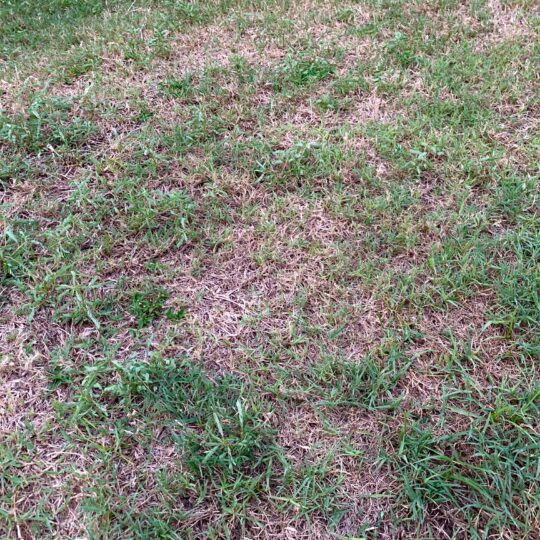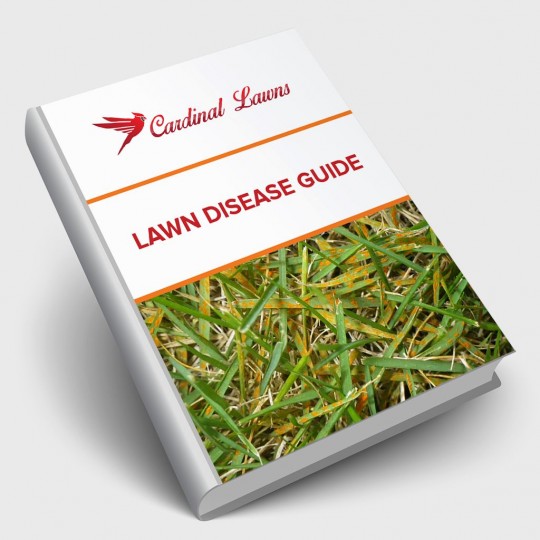Types of Fall Lawn Diseases
Prevent, Identify & Treat
Posted
November 25, 2021

Even though your lawn is about to go dormant for the winter, there are things you can do now to help it wake up healthy in the spring. Certain conditions can negatively impact your lawn over the fall and winter. Learn how to prevent, identify, and treat different types of fall lawn diseases to ensure the growing season is a green one.
Types of Fall Lawn Diseases
Between harsh weather and heavy foot traffic, your lawn undergoes a lot of stress in the summer. This makes it more susceptible to different types of lawn disease. Then, once autumn arrives the grass gets covered with a heavy, wet blanket of pretty, but potentially damaging leaves. Left untreated, this combination of stress and fungi-attracting leaves could turn a lawn full of lush grass into a brown, patchy mess.
Here are some signs of the most common lawn diseases:
Brown Patch. This one is self-explanatory. If you see large patches of dry, brown grass then you’re probably dealing with brown patch. This disease prays on cool-season grasses like tall fescue and perennial ryegrass. The extreme changes in temperature from day to night create a heavy dew that can add to the fungal infection.
Large Patch. With similar symptoms as brown patch, large patch is more noticeable in cooler temperatures as it affects warm-season grasses.
Dollar Spot. Damage from this disease doesn’t start as dramatic and large as brown patch. However, smaller, silver dollar-sized, straw-colored circles can grow into larger patches of dead grass if left untreated.
There are ways to prevent lawn disease, prep grass for a restful winter, and help ensure it bounces back beautifully in the spring.
Preventing & Treating Disease
Most of the lawn diseases mentioned thrive in moist areas where the grass may be weaker because of harsh conditions, traffic, or thatch. While you can’t do a lot about the weather patterns, you can help strengthen your grass and limit excess moisture to prevent fungal growth.
Reduce Moisture. From properly watering your lawn to improving drainage, there are ways to help reduce the amount of moisture in your grass. If your grass needs water, make sure you’re watering it early in the day so it has time to absorb and dry before the cooler nights. Less frequent, deep watering sessions are more effective than short showers. Plus, dormant grass doesn’t need as much water. Let your lawn dry out between waterings and clean out any irrigation system to make sure it’s operating correctly.
Mow. Keep mowing your lawn until the ground freezes and the grass stops growing. Gradually decrease the amount you mow and make sure you’re still cutting the correct height. Mowing can also help break up the leaf layer on your grass. Bonus: smaller bits of leaves and grass clippings act as a natural fertilizer.
Fertilize. Maintain a healthy lawn with a regular fertilizing schedule. There are weed and feed formulas you can apply to help keep weeds at bay while feeding your lawn. You also want to be careful not to overfertilize. Too much nitrogen can also kill your grass and even attract fungus. Apply a slow-release fertilizer in the spring or summer to help keep your fall and winter lawn at its best.
Aerate. Combat compaction from traffic and thatch by aerating your lawn. Not only does this allow your lawn to breathe when you break up the soil, but it will also help drainage and water flow to the roots.
Fungicide. If you’ve tried to prevent lawn disease, but it happens anyway, you can still treat it with anti-fungal formulas.
Professional Lawn Disease Control
If yard woes seem to be a constant battle, let lawn care professionals help you win. With expert knowledge and experience, companies like Cardinal Lawns can help you plan and schedule the right maintenance techniques. Better yet, pros have the tools and equipment needed to get the job done right efficiently and effectively. Contact Cardinal Lawns any time of the year to help you tackle the outdoors so you can spend more time enjoying and less time battling.

Download Your FREE Lawn Disease Guide
Even the most manicured landscapes are susceptible to lawn disease. Take some time to learn about identification and removal before one takes over your lawn. This handy guide teaches you how to spot common lawn diseases as well as how to properly treat them.